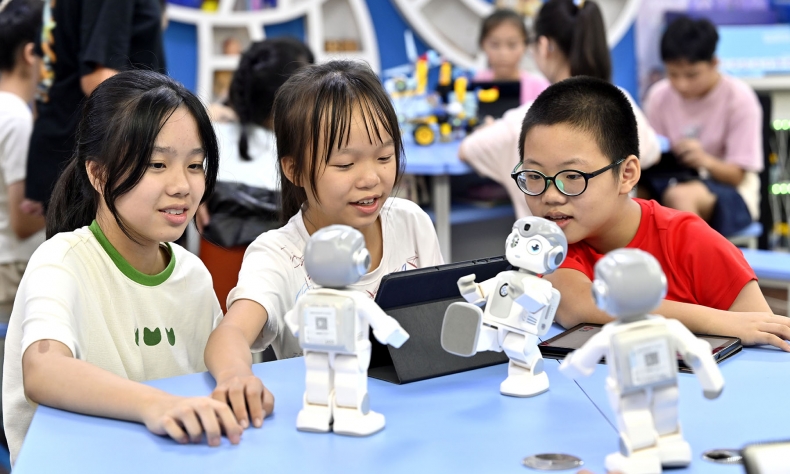Nurturing Tomorrow’s Innovators

By investing in AI literacy from an early age, China is positioning itself to lead in a field that will define the coming decades.
Starting September 1, primary and secondary schools in Beijing will incorporate at least eight hours of AI education per academic year, according to an announcement from the Beijing Municipal Education Commission in March. The move emphasizes China’s push to dominate the AI sector by nurturing homegrown talent early.
This initiative is about more than coding or robotics. China has long recognized AI as a core driver of economic transformation and the curriculum aims to cultivate a generation comfortable with AI-driven problem-solving, equipped to thrive in an innovation-driven digital economy.
The country’s New Generation AI Development Plan, unveiled in 2017, set an ambitious target for China to become the world’s leading AI powerhouse by 2030. While much of the global hi-tech race has fixated on research breakthroughs, infrastructure development and industrial applications, China is playing the long game: If you want to lead in AI tomorrow, you have to teach it in classrooms today.
One of the main challenges facing the global AI industry today is, in fact, a shortage of skilled professionals. The demand for AI talent far outstrips supply, with companies and research institutions competing fiercely for top minds. China, despite its rapid progress in AI, has acknowledged the need to cultivate a deeper bench of experts to sustain long-term growth. By integrating AI into school curricula now, China ensures its workforce won’t just keep up—it could set the pace.
Educational reform in China has historically been responsive to economic needs. The country’s rapid rise as a manufacturing and technology hub was supported by a deliberate emphasis on STEM (science, technology, engineering and mathematics) education. AI is becoming the next frontier and its inclusion in early education marks a natural evolution of China’s skills development strategy. Beyond just technical training, the introduction of AI courses also fosters critical thinking and ethical considerations, preparing students not just to use the technology, but to shape its future development responsibly.
China’s AI education push offers valuable lessons for other countries that are grappling with how to prepare their youth for an AI-driven future.
While many nations have recognized AI’s importance, efforts to integrate it into education remain fragmented. The challenge lies in developing comprehensive curricula that go beyond basic coding skills to include AI ethics, machine learning principles and real-world applications. China’s structured approach, with government backing and integration into the national education system, offers a model that other countries can learn from and adapt to their own needs.
Furthermore, this initiative might have implications for global AI collaboration. As China produces a new generation of AI-literate individuals, opportunities for international cooperation in research, development and policymaking could expand. At the same time, it may also intensify competition, as countries seek to develop their own talent pipelines to keep pace with China’s rapidly growing AI ecosystem.
By investing in AI literacy from an early age, China is positioning itself to lead in a field that will define the coming decades. In the digital age, national strength will be determined not just by physical resources or industrial output, but by the ability to cultivate and harness human intelligence.
As AI continues to evolve, nations that prioritize education and talent development will be best positioned to shape the future. China’s approach serves as a powerful reminder that preparing for an AI-driven world begins in the classroom.
The rest of the world would do well to take note.
The author is a finance professional at Industrial and Commercial Bank of China and a non-resident associate fellow at the Beijing-based think tank Center for China and Globalization.
 Facebook
Facebook
 Twitter
Twitter
 Linkedin
Linkedin
 Google +
Google +










